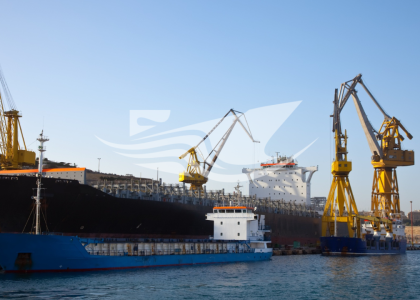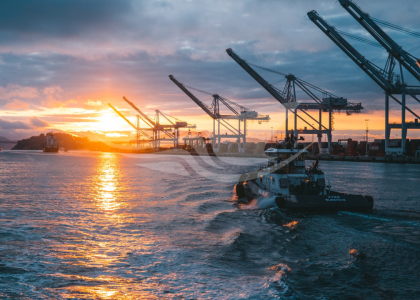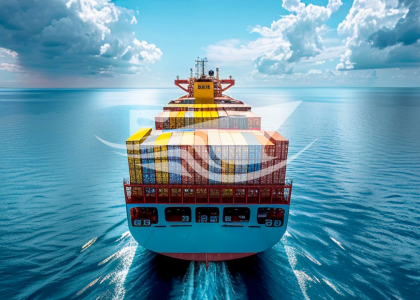IMO Compliant Ship Design is at the forefront of modern maritime innovation. With increasing global focus on sustainability and tighter regulations, achieving environmentally compliant ship design is no longer optional—it’s imperative. In this article, we explore how IMO compliant ship design ensures vessels meet global expectations, reduce emissions, and align with regulatory demands (image by: freepik).
Why IMO Compliance Matters in Modern Ship Design
The International Maritime Organization (IMO) plays a central role in shaping the environmental direction of the maritime industry. From reducing sulfur emissions to improving energy efficiency, the standards set by the IMO define what is acceptable and necessary. IMO compliant ship design integrates these requirements into the earliest phases of vessel planning, ensuring that new builds and retrofits alike are ready for a future defined by sustainability.
Key Environmental Regulations from IMO
Among the most influential regulations are the MARPOL Annex VI standards, which mandate limits on NOx and SOx emissions. Additionally, the Energy Efficiency Design Index (EEDI) is required for most vessel types. Designing with these regulations in mind means considering hull form, propulsion systems, and onboard technologies that reduce fuel consumption and emissions.
Core Principles of Environmentally Compliant Vessel Design
To achieve compliance, naval architects and marine engineers must embed eco-conscious thinking from the concept stage. This includes:
- Optimizing hull shapes to reduce drag
- Integrating hybrid or alternative fuel systems
- Choosing materials that reduce lifecycle emissions
- Enhancing automation and monitoring systems for energy tracking
All of these elements support IMO compliant ship design while also delivering cost savings over the vessel’s operational life.
Ensure full compliance and environmental responsibility. Partner with us for IMO-compliant vessel design and consultation.
Challenges in IMO-Compliant Shipbuilding
Meeting IMO standards requires balancing environmental goals with operational efficiency and financial feasibility. For shipowners, this means investing in technologies that may have higher upfront costs but offer long-term benefits. Shipbuilders, meanwhile, must stay informed about evolving IMO regulations to offer relevant solutions.
Designing for Global Maritime Regulations
Designing ships for international waters means accounting for a web of regulations beyond IMO—including regional and national rules. By focusing on IMO standards as a baseline, designers ensure that vessels can operate globally without retrofits or compliance issues.
Digitalization in Support of Compliance
Smart ship technologies have become instrumental in supporting environmentally compliant designs. Real-time data analytics, fuel monitoring systems, and predictive maintenance tools help optimize operations and ensure continued compliance. These tools also provide documentation and reporting features to demonstrate compliance to regulatory bodies.
Economic Advantages of IMO-Compliant Ship Design
While environmental compliance is a legal necessity, it also presents economic advantages. Efficient vessels consume less fuel, require fewer emissions-related maintenance events, and are eligible for port fee discounts in many green ports worldwide. Additionally, many charterers now prefer vessels with verified compliance ratings, creating competitive advantages for shipowners.
Build a fleet that meets global standards. Explore our services for environmentally compliant ship design.
Collaboration Across the Design Lifecycle
Achieving IMO compliance is not the responsibility of designers alone. It requires collaboration between naval architects, shipyards, regulatory bodies, and shipowners. From preliminary design reviews to final construction audits, cooperation ensures that all IMO environmental standards are properly addressed and verified.
What to Expect from Our IMO Compliant Ship Design Services
PT. Lentera Segara Indonesia brings decades of shipbuilding and engineering expertise. Our team works closely with clients to:
- Assess vessel concepts for IMO compliance risks
- Develop detailed blueprints aligned with EEDI and MARPOL standards
- Integrate fuel-efficient technologies and emission control systems
- Support regulatory submission and certification processes
Whether you’re building new or upgrading existing vessels, our solutions are tailored for durability, sustainability, and performance.
Know someone building a new vessel? Share this article and help promote sustainable ship design in your network!
Designing for a Greener Future
IMO compliant ship design is the pathway to a more sustainable maritime industry. By embedding environmental responsibility into every stage of the design process, shipowners and designers can future-proof their fleets, reduce operational costs, and ensure global market access. Let’s build ships that not only perform—but preserve the oceans they sail on.
Ready to make your fleet IMO-compliant?
Contact PT. Lentera Segara Indonesia today for expert support in:
- Ship Building
- Ship Management
- Shipyard Consultant
- Design & Engineering
- Shipyard Audit







